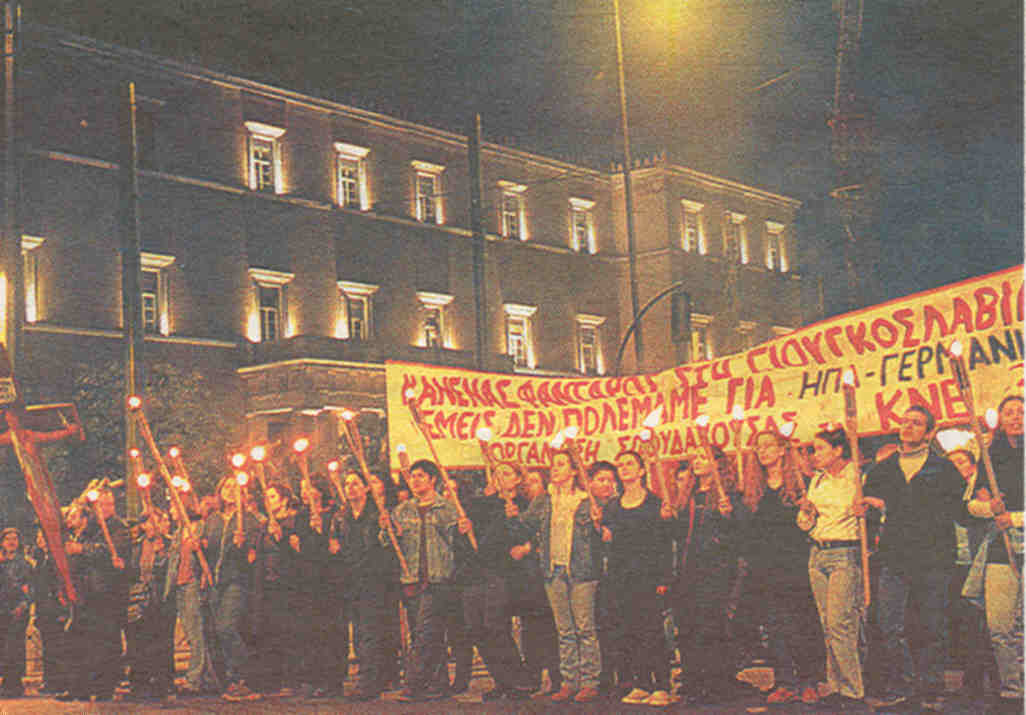 |
|
|
|
|
 4 April, 1999 |
|
|
|
|
4 April 1999: Thousands of Athenians carrying banners and crucifixes march past the parliament in a candlelight protest against Nato's escalation of its bombing campaign on Yugoslavia with the overnight bombardment of Belgrade suburbs, which coincided with the start of the Greek-Orthodox Holy Week in Greece. The massive US-Ied bombardment was launched on March 24 against Serb positions in Kosovo following Yugoslav President Slobodan Milosevic's refusal to abandon his country's sovereignty over the southern most Serbian province to its ethnic |
 |
|
Albanian majority and a Western-backed guerrilla group called the Kosovo Liberation Army (KLA) which the Serb government accused of terrorism and financial links with Osama Bin Laden's notorious Islamist AI Qaida organisation. The airstrikes; which triggered a mass exodus of thousands of ethnic Albanians to neighbouring Balkan countries, lasted, continuously for 73 days, from 24 March to 11 June 1999, when Serbia finally agreed to withdraw its military forces from Kosovo. The bombardment, which devastated the infrastructure of major Serbian towns and cities killing hundreds, involved up to 1,000 aircraft operating mainly from bases in Italy and aircraft carriers stationed in the Adriatic. Tomahawk cruise missiles - hardened with depleted uranium - were also extensively used, fired from aircraft, ships and submarines. The United States was the dominant member of the coalition against Serbia, although all of the Nato members were dragged into it, one way or the other - even Greece, despite publicly opposing the war. |
|
|
(Posting date 4 June 2007) HCS encourages readers to view other articles and releases in our permanent, extensive archives at the URL http://www.helleniccomserve.com/contents.html. |
|
|
|
|
2000 © Hellenic Communication Service, L.L.C. All Rights Reserved.
http://www.HellenicComServe.com |
|
